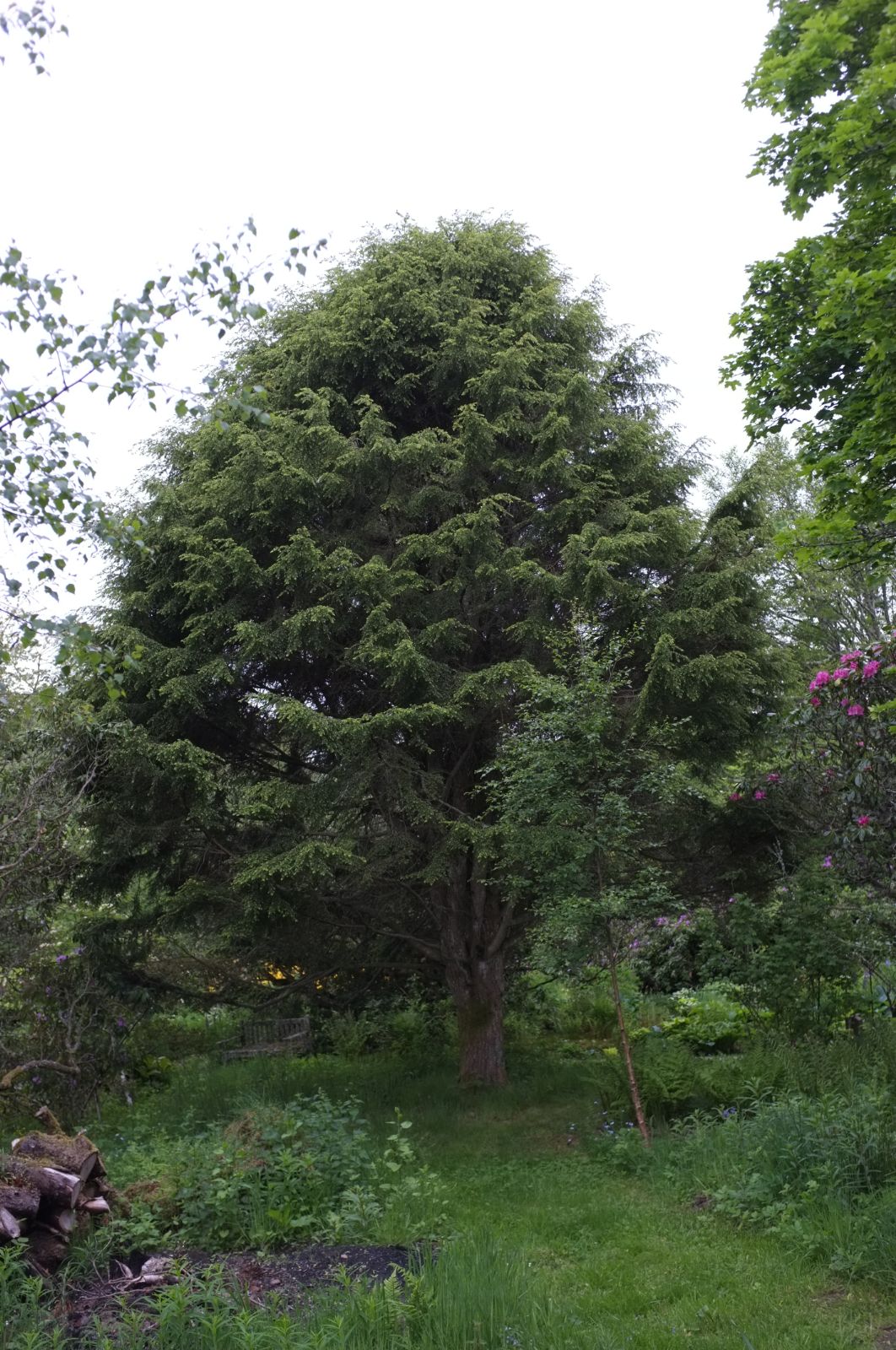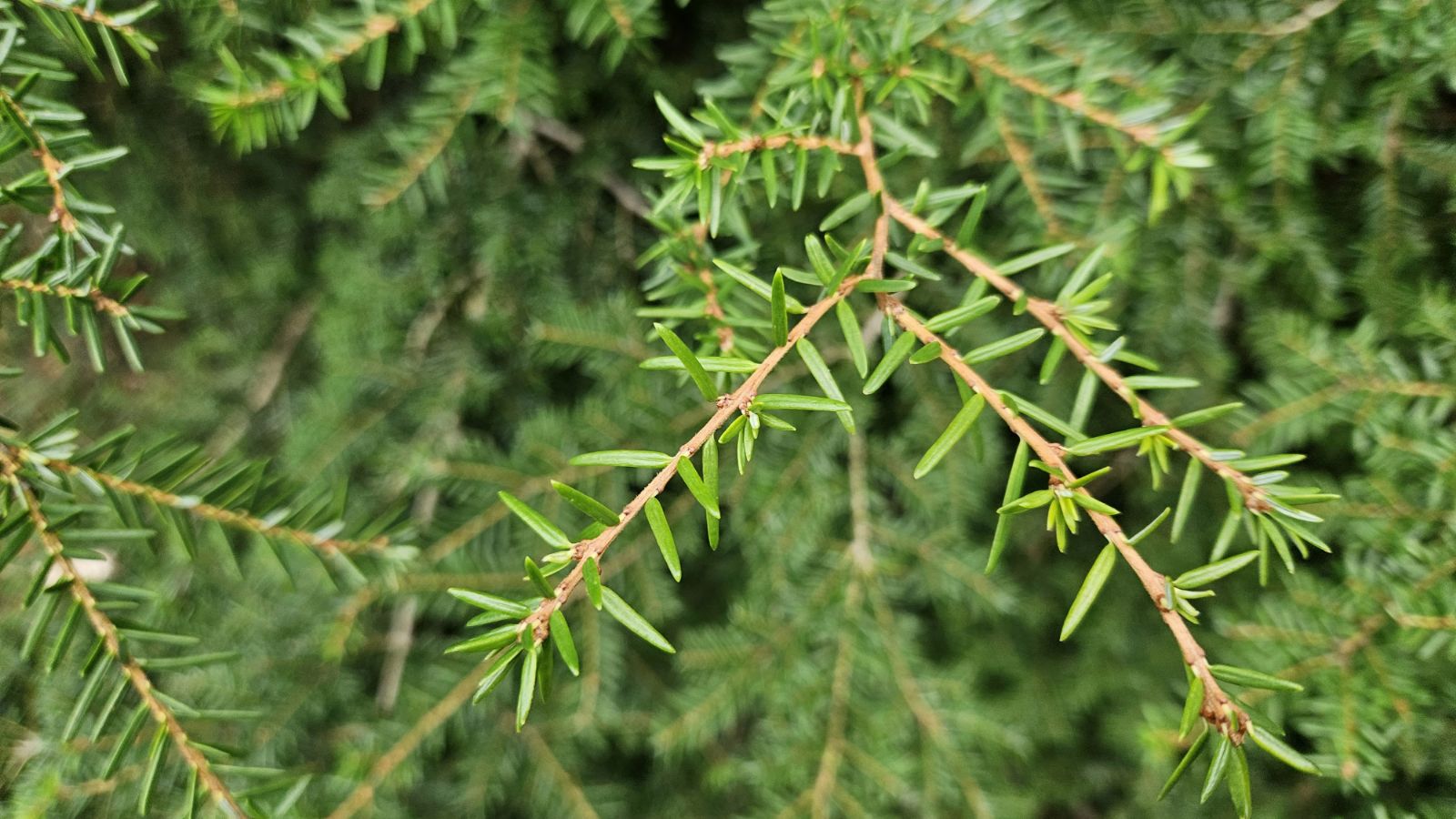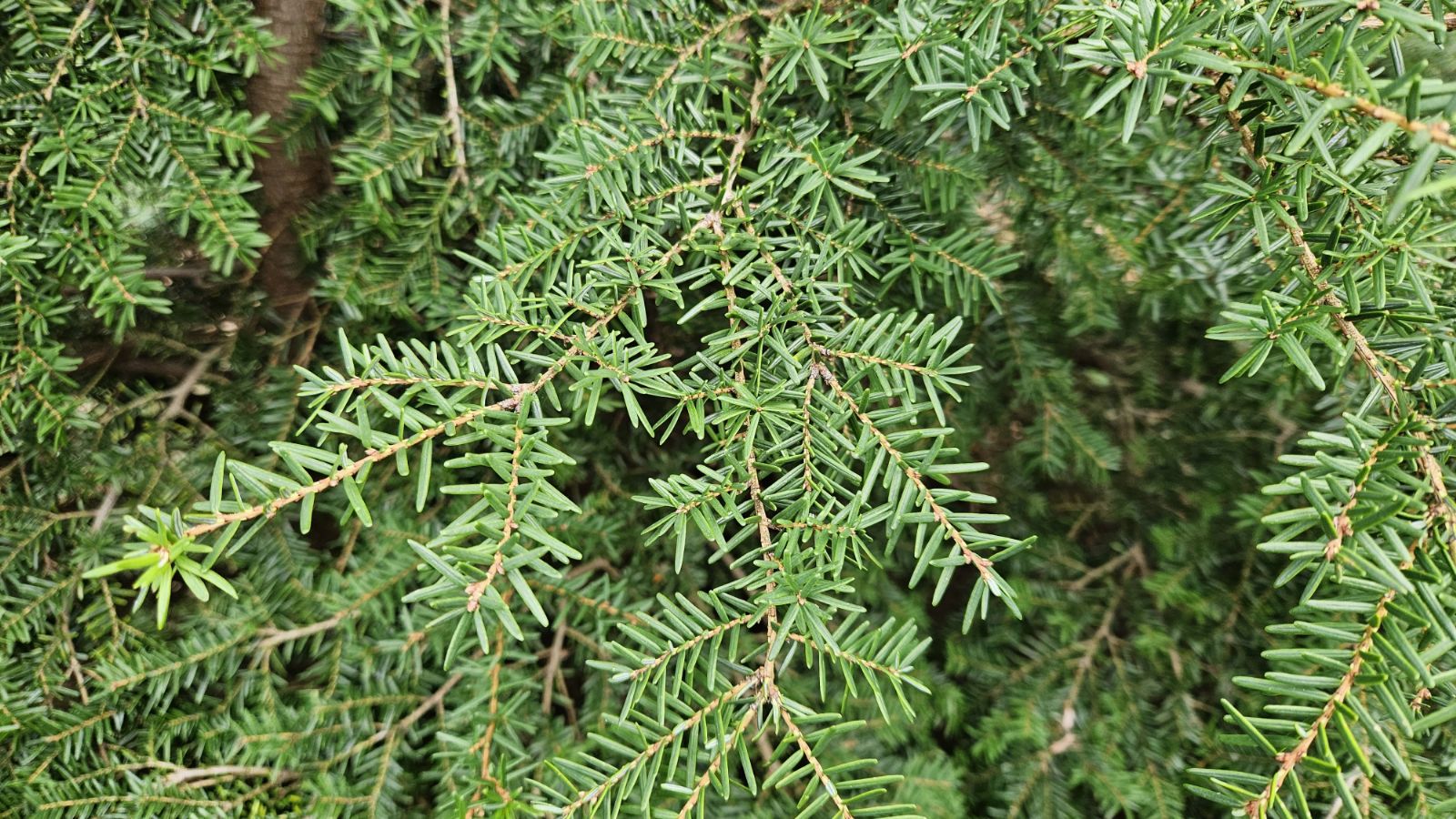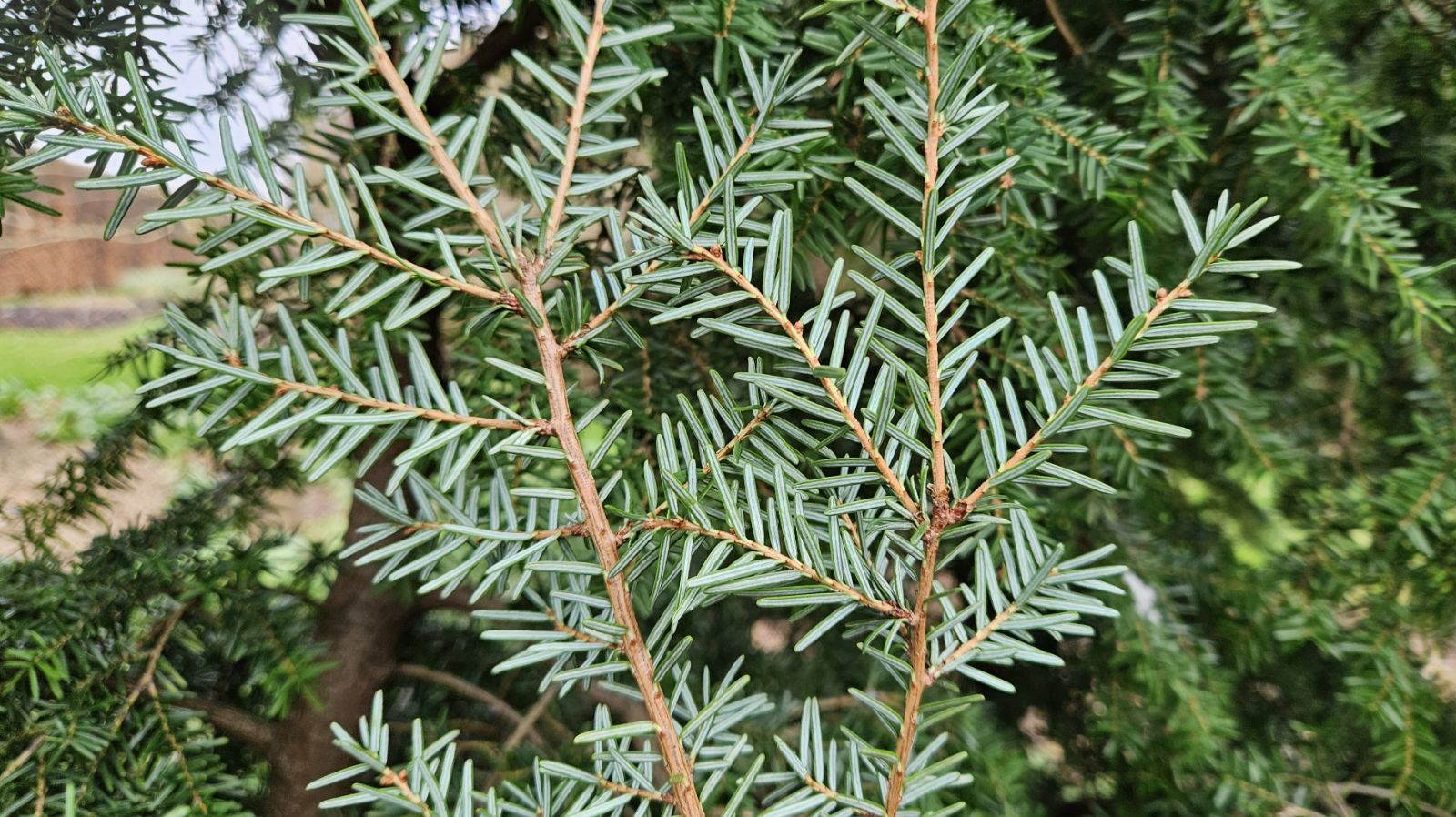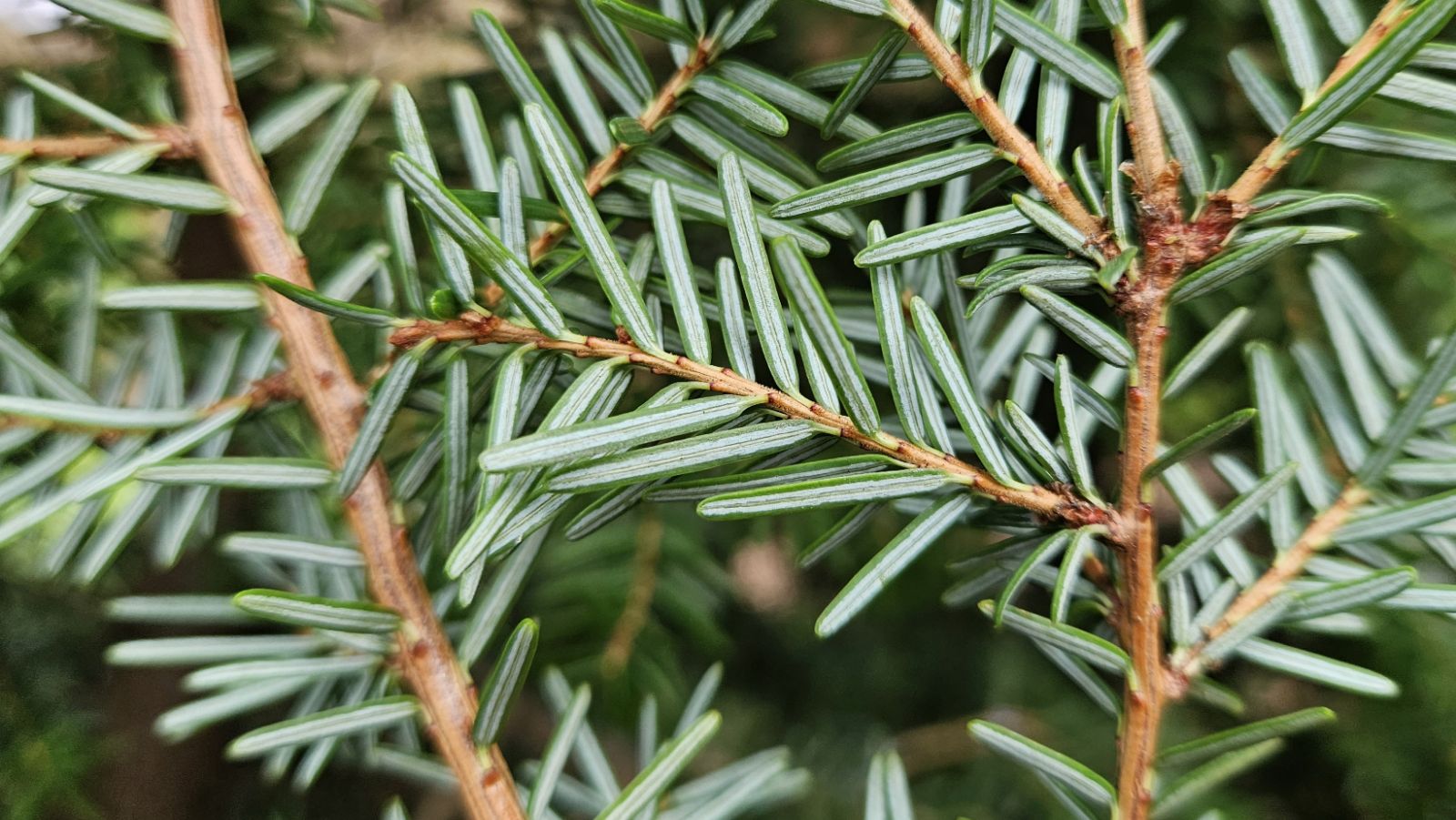Tsuga caroliniana
Credits
Article from Bean's Trees and Shrubs Hardy in the British Isles
Recommended citation
'Tsuga caroliniana' from the website Trees and Shrubs Online (treesandshrubsonline.
Genus
Common Names
- Carolina Hemlock
A tree usually 50 to 80 ft high; young shoots glossy, pale brown, downy on the upper surface. Leaves linear, 1⁄4 to 3⁄4 in. long, mostly of uniform width, rounded, and sometimes slightly notched at the apex, margins not toothed, dark green above, with two bands of stomata beneath. The lower leaves spread in two opposite ranks, but the shorter ones on the upper side of the branchlets are more or less erect. Cones shortly stalked, 1 to 11⁄2 in. long; scales oblong, considerably longer than wide.
Native of the south-eastern USA, where it has a limited range in the Appalachians from Virginia to Georgia. It is easily distinguished from both T. canadensis and T. heterophylla by its entire leaf-margins and reddish brown shoots, and from the former, with which it is more likely to be confused, by the elongate cone-scales, spreading widely when the cone is ripe. See also T. diversifolia and T. sieboldii.
T. caroliniana was introduced to Kew from the Arnold Arboretum in 1886. It has never succeeded really well in Britain, although capable of withstanding severe cold. In the United States it is valued almost as much as the eastern hemlock, both as a specimen and for hedges and topiary work, and is said to be more tolerant of a polluted atmosphere.
Examples of T. caroliniana are: National Pinetum, Bedgebury, Kent, pl. 1925, 32 ft (1970); Wakehurst Place, Sussex, south of Westwood Lake, 42 × 4 ft (1973); R.H.S. Garden, Wisley, 30 × 21⁄4 ft (1969); Hollycombe, nr Liphook, Hants, 42 × 4 ft (1974).
From the Supplement (Vol. V)
specimens: R. H. S. Garden, Wisley, Surrey, 33 × 23⁄4 ft (1975); National Pinetum, Bedgebury, Kent, pl. 1925, 32 ft high (1970); Wakehurst Place, Sussex, Sands Pinetum, 48 × 4 ft (1979); Borde Hill, Sussex, Gores Wood, 35 × 23⁄4 ft (1981); Hollycombe, Liphook, Hants, 46 × 41⁄4 ft (1984); Bodnant, Gwyn., 26 × 31⁄4 ft (1981).

